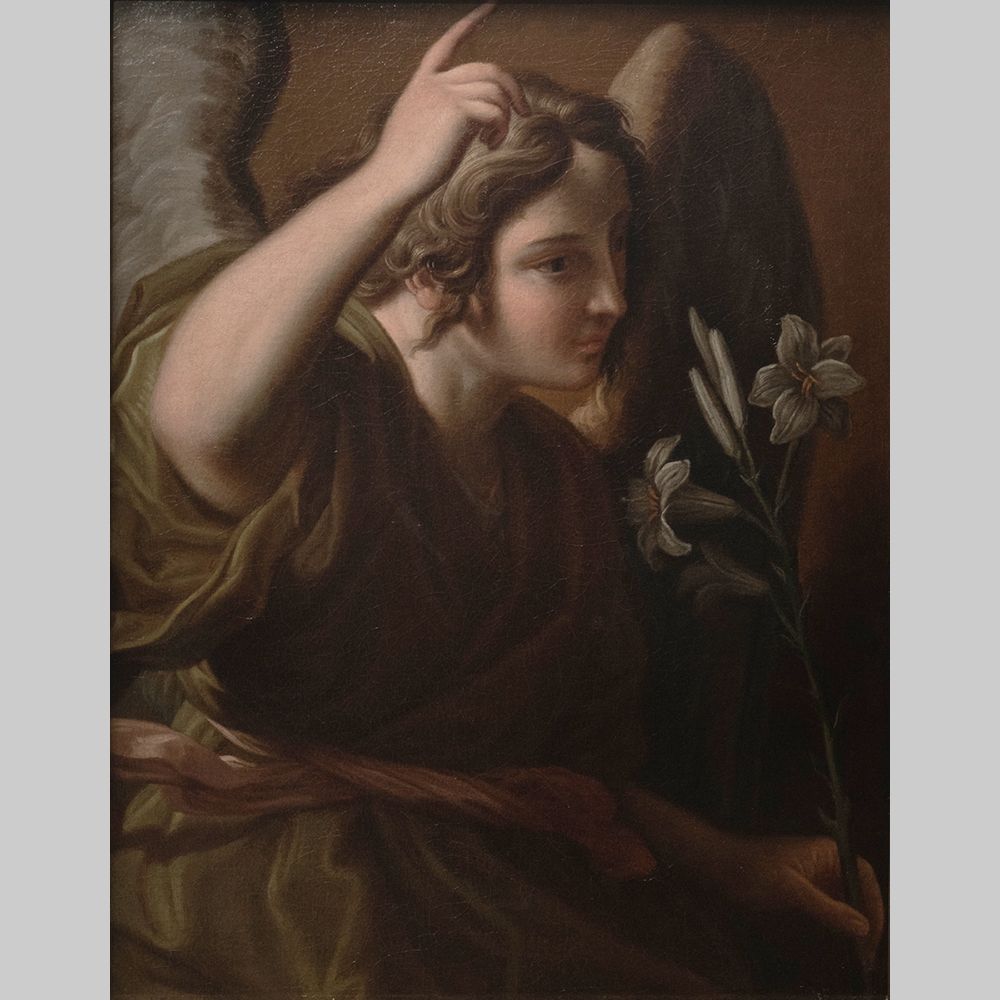Gaetano Lapis (1704–76)
Angel of the Annunciation, c. 1730
Oil on canvas
McMullen Museum of Art, Boston College, 1988.28

Nancy Netzer
Inaugural Robert L. and Judith T. Winston Director, McMullen Museum and Professor, Art History

The Archangel Gabriel raises his right hand in blessing and presents a lily, a symbol of Mary’s purity, in his left. Clothed in windblown drapery, his wings are partially opened. Pushed against the picture plane, the tightly cropped three-quarter-length angel looks to be landing to deliver the message prognosticating Jesus’s birth to Mary, who probably was depicted on a now lost pendant. The palette is a subtle mix of olive greens, pinks, and white; light emanating from the left focuses the viewer on the angel’s face and arm.
Born in Cagli, in the 1720s Gaetano Lapis moved to Rome where he trained under Sebastiano Conca (1680–1764) and where he subsequently established a successful career. His late baroque classical style, indebted to Carlo Maratta’s (1625–1713) restrained compositions, graceful figures, and light focused on facial expressions and hand gestures, won him important commissions, including a painting of the Birth of Venus for a ceiling of the Palazzo Borghese in Rome. Federico Lemme published a smaller version by Lapis of the McMullen’s painting (see image). He compares this cabinet picture to Lapis’s archangels in two larger paintings of the Annunciation in the Galleria Nazionale delle Marche in Urbino and the Monastery of San Martino ai Monti in Rome. Thus, Lapis’s image of the archangel appears to have gained currency and generated demand, possibly by young European men of means on the Grand Tour collecting works of Italian art to display in their palatial homes. The McMullen’s version seems to be in its original eighteenth-century hand-carved frame.

